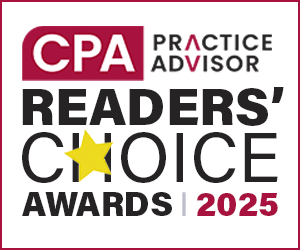It’s time to retire the fax machine.
Since its surge in popularity a quarter-century ago, the facsimile machine (as it is formally known) has become an office fixture whose presence and use have gone unchallenged for far, far too long.
Accountants who have long since given up green eyeshades, pocket calculators and manual ledgers still cling ferociously to their fax machines. Fax machines and fountain pens are, in fact, the only 19th-Century technologies still at use in the typical accounting office (the fax machine was actually patented in 1843).
Without question, the fax machine filled a necessary gap in office technology. It enabled the fast communication of signed documents and gained official status as an acceptable method of transmitting and receiving legal documents such as contracts. But that was in the day when the only alterative to fax was to hand-deliver the original documents — expensive and slow.
It was before we had the ability to create perfect, signed and locked copies of electronic documents. Before the age of “Save As PDF.” Before the age of electronic signatures.
With the advent of the personal computer, fax machines have slowly degenerated into noisy, slow, low-quality communication devices whose only remaining charm is that they take almost no technical acumen to operate. E-mail for Luddites, you might call them.
Sure, there are some benefits to the fax machine. But in the 21st Century, these benefits are far outweighed by the negatives — the cost of upkeep and supplies, the agony of junk faxes, the faxes lost because the machine was out of paper, etc. For even more fun, try cashing a third-party check at a bank that doesn’t know you — you’ll spend a day or more while they send fax after fax in an effort to confirm the signature, usually to no avail.
No, it’s time to move on. And Portable Document Files, or the “PDF Format,” allows us to do exactly that.
There are 3 common ways to replace the venerable fax machine:
- The “fax-modem” card. This is actually the worst of the solutions, but does enable documents from Microsoft Office and some other applications to be sent as faxes directly from the desktop. It is still noisy, slow and low-quality, but at least the fax machine is gone.
- Contract with one of the many “broadband fax” services. These are usually hosted websites where documents can be sent, converted to faxes and sent to the recipient. Inbound faxes are converted to PDF files and e-mailed to your desktop. This method is better and quicker, but it can be costly if you send and receive a lot of documents.
- The preferred method is to create a custom solution with two parts. The first is a good scanner that converts paper documents to PDF files. A good one with autofeed capabilities generally costs less than a fax machine, and is speedy enough that a single scanner can meet the needs of a typical accounting office. This scanner can also be part of the firm’s document management and archiving system, further enhancing its value. The second part is a software solution that enables documents to be saved in PDF format directly from the desktop. For Microsoft Office 2007, PDF support is built in to the software. For earlier versions, third-party add-ons will handle the conversion. And most major accounting software packages now have PDF support (or soon will) from within their programs.
There are a number of advantages — beyond getting a leg up on document management and archiving for the office. By treating documents as e-mail rather than faxes, they can be securely transmitted over the Internet. Junk faxes can be filtered out (something not possible with a fax machine). And you’ll spend less on paper.
You can add another touch although it is less secure. However, it adds a nice finish to documents. I’m referring to a digitized signature. Note that I’m not talking about an electronic signature, which is a secure method of assuring the validity of a document and has legal status. I’m talking about converting your handwriting and signature to a font, so that you can add personalized notes to client documents, sign letters with your own “signature,” etc. The cost of having your handwriting converted to a font varies from $74 to $300, but it seems to be a good long-term investment.
At least I thought so.
Thanks for reading CPA Practice Advisor!
Subscribe Already registered? Log In
Need more information? Read the FAQs



